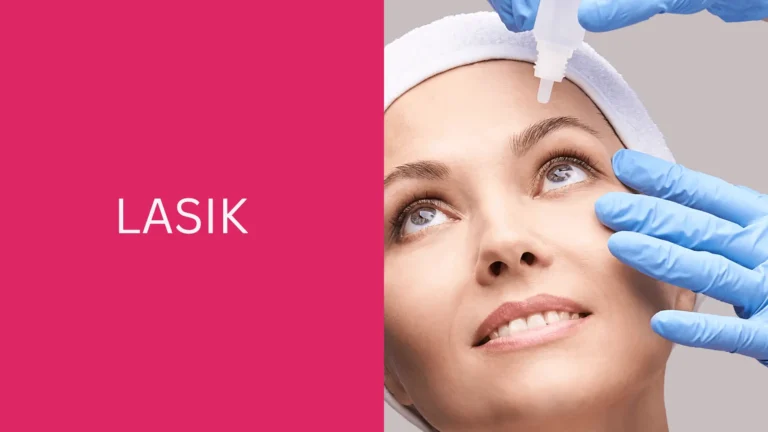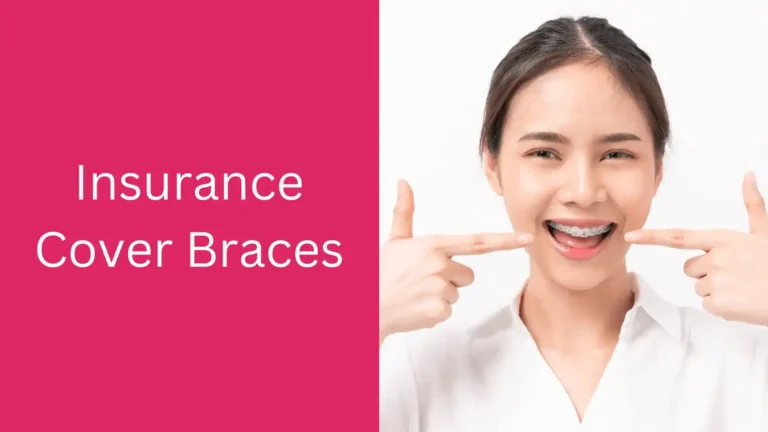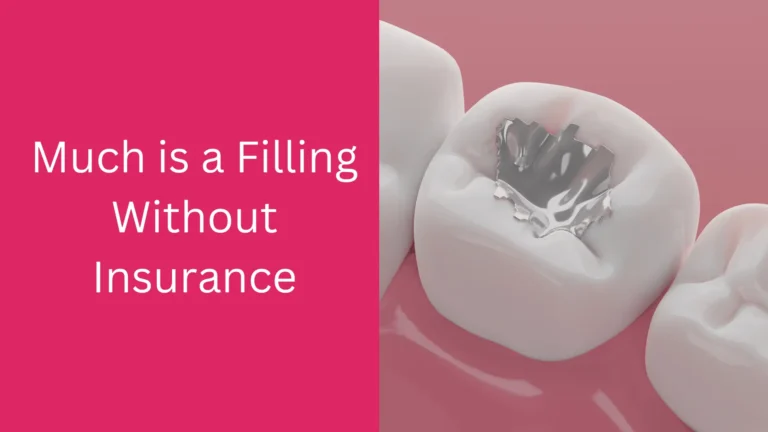Is Invisalign Covered by Insurance? Are You Safe
Is Invisalign covered by insurance? Yes, dental insurance can cover Invisalign, but coverage varies based on your specific plan. Many insurance providers classify Invisalign similarly to traditional braces, covering a portion of the treatment cost if orthodontic benefits are included. Typically, plans with orthodontic benefits cover a percentage of the total Invisalign expense, though limitations like lifetime maximums and specific coverage conditions may apply. Reviewing your policy details can clarify what costs will be covered.
Some insurance plans may only cover treatments considered “medically necessary,” so Invisalign coverage might depend on whether it’s needed for health reasons beyond appearance. To understand your benefits, consider contacting your insurance provider and consulting with your Invisalign provider, who can often help with a pre-treatment cost estimate. Additionally, Health Savings Accounts (HSAs) or Flexible Spending Accounts (FSAs) can help offset out-of-pocket expenses if coverage is limited.

Will Insurance Cover Invisalign
When considering Invisalign treatment, one of the most common questions is whether it is covered by insurance. The answer to this question can be complex, as it depends on several factors including your specific insurance plan, the reason for the treatment, and the coverage options available to you.
This article aims to provide a clear and concise explanation to help you understand if your insurance will cover Invisalign.
Understanding Dental Insurance Coverage
Dental insurance plans vary widely, but they generally fall into two categories: plans that cover orthodontic treatments and those that do not. Orthodontic coverage is typically included in more comprehensive dental plans, often referred to as premium plans. These plans usually cover a portion of the cost for treatments like braces or Invisalign.
Orthodontic Coverage
If your dental insurance plan includes orthodontic coverage, there’s a good chance it will cover part of the cost for Invisalign, or braces.
However, there are some important details to consider:
Medical Necessity
In some cases, insurance may cover Invisalign if it is deemed medically necessary. For instance, if the misalignment of teeth is causing significant health issues like difficulty in chewing or speech problems, your dentist or orthodontist might be able to justify the treatment as a medical necessity. This can sometimes lead to better coverage options.
Steps to Determine Your Coverage
To find out if your insurance covers Invisalign, follow these steps:
Alternatives and Payment Options
If your insurance does not cover Invisalign, there are still options available:
How Much Will Insurance Cover Invisalign
Most basic dental insurance plans do not include coverage for orthodontic work, including Invisalign. However, more comprehensive plans often provide some level of coverage for these treatments. The amount your insurance will cover can vary significantly based on your plan and its specific terms, much like pelvic floor therapy coverage, and Chiropractic.
Percentage of Coverage
For plans that include orthodontic benefits, the insurance usually covers between 25% and 50% of the cost of Invisalign. The exact percentage depends on your specific insurance plan.
Lifetime Maximum Benefit
Many insurance plans have a lifetime maximum benefit for orthodontic treatments. This cap is the total amount the insurance will pay for orthodontic care over your lifetime, often ranging from $1,000 to $3,000. Once this limit is reached, any remaining costs will be your responsibility.
Deductibles and Co-Payments
Even with insurance, you might have to pay deductibles and co-payments. A deductible is the amount you must pay out-of-pocket before insurance starts to cover costs, and co-payments are fixed amounts you pay for each visit or service.
Verification with Insurance Provider
To know exactly how much your insurance will cover, contact your insurance provider. Confirm:
Common misconceptions about insurance coverage for Invisalign
There are several misconceptions about insurance coverage for Invisalign that can lead to confusion and misunderstandings. Clarifying these can help you better understand your benefits and potential costs.
Misconception 1: Invisalign Is Always Considered Cosmetic
Many people think that Invisalign is purely cosmetic and thus not eligible for insurance coverage. However, if Invisalign is needed for medical reasons, such as correcting a bite problem or severe misalignment that affects oral health, it may be covered under orthodontic benefits.
Misconception 2: You Can’t Use HSA or FSA Funds
Some believe that Health Savings Accounts (HSAs) or Flexible Spending Accounts (FSAs) cannot be used for Invisalign. In reality, both HSAs and FSAs can often be used to pay for orthodontic treatments, including Invisalign, which can help reduce the overall cost.
Misconception 3: Coverage Amount Is the Same for All Orthodontic Treatments
Another misconception is that the coverage amount is the same for all orthodontic treatments. However, the coverage for Invisalign might differ from traditional braces, depending on the insurance plan’s specifics. It’s essential to check the exact details of what is covered.
Misconception 4: Insurance Coverage Is Automatic
Some assume that if their plan includes orthodontic coverage, Invisalign will be automatically covered. In reality, many insurance companies require detailed documentation and pre-approval processes to determine the necessity and eligibility for coverage.
Misconception 5: Switching Plans Won’t Affect Coverage
Switching insurance plans can affect your orthodontic coverage, including Invisalign. If you change your insurance provider or plan, previous approvals and coverage terms may no longer apply, and you might need to go through the approval process again under the new plan.
Misconception 6: All Orthodontists Accept All Insurance Plans
Not all orthodontists accept all insurance plans. It’s important to ensure that your orthodontist is within your insurance network to maximize your benefits and minimize out-of-pocket costs. Checking with both your orthodontist and insurance provider can prevent unexpected expenses.
Factors that determine insurance coverage for Invisalign
Insurance coverage for Invisalign depends on several factors. Understanding these can help you assess your eligibility and potential costs.
Age of the Patient
Orthodontic coverage is often more common for children and teenagers than adults. Many insurance plans prioritize coverage for younger patients, though some plans do include orthodontic benefits for adults.
Medical Necessity
Insurance companies are more likely to cover Invisalign if it’s deemed medically necessary. Conditions such as severe malocclusion, jaw alignment issues, or significant bite problems can qualify for coverage, as they affect overall oral health, not just appearance.
Type of Insurance Plan
The specific type of dental insurance plan you have plays a significant role. Comprehensive plans are more likely to offer orthodontic benefits, while basic plans may not. Within comprehensive plans, the extent of coverage for Invisalign can vary widely.
Coverage Limits
Insurance plans often have annual or lifetime maximums for orthodontic treatments. These limits cap the total amount the insurance company will pay, which affects how much of the Invisalign cost will be covered.
Pre-Approval Requirements
Some insurance plans require pre-approval before covering Invisalign. This process involves submitting a treatment plan and getting authorization from the insurance company, confirming that they will cover part of the costs.
Network Providers
Insurance coverage can be influenced by whether your orthodontist is within the insurance company’s network. In-network providers usually result in better coverage and lower out-of-pocket costs compared to out-of-network providers.
Waiting Periods
Many insurance plans have waiting periods for orthodontic coverage, meaning you need to be enrolled in the plan for a certain period before you can use the orthodontic benefits. This period can range from several months to a year or more.
Policy Exclusions
Some insurance policies have specific exclusions that affect coverage for Invisalign. It’s important to read the fine print of your insurance policy to understand any exclusions that may apply to orthodontic treatments.
When planning for treatments like Invisalign, it’s helpful to consider other aspects of your insurance and financial planning. Improving productivity with your insurance agent can streamline the process of understanding your coverage. Knowing if you have gap insurance, for instance, can help ensure you’re protected from unexpected costs.
Choosing the right agent is also essential for finding a policy that meets all your needs. Looking into retirement options can help you balance long-term financial goals with health investments. For treatments outside standard coverage, like Lasik or veneers, understanding potential costs upfront is key to making informed decisions.
Types of insurance plans that may cover Invisalign treatment

When seeking insurance coverage for Invisalign, it’s important to understand the various types of insurance plans that may provide benefits for this treatment. Different plans offer different levels of coverage, and knowing what each type entails can help you make an informed decision.
Dental PPO Plans
Preferred Provider Organization (PPO) plans are among the most common dental insurance types offering orthodontic benefits, including Invisalign. PPO plans provide a network of dentists and orthodontists, but also offer the flexibility to see out-of-network providers at a higher cost.
Coverage under PPO plans typically includes a percentage of the treatment cost, often between 25% and 50%, after deductibles are met.
Dental HMO Plans
Health Maintenance Organization (HMO) plans require you to choose a primary care dentist and get referrals for specialist care. These plans often have lower premiums and out-of-pocket costs. While HMO plans might offer orthodontic benefits, the coverage for Invisalign can be limited compared to traditional braces. Additionally, coverage is usually restricted to in-network providers.
Comprehensive Dental Insurance Plans
Comprehensive dental insurance plans, also known as full-coverage plans, often include a broader range of dental services, including orthodontics. These plans may cover a higher percentage of Invisalign costs and may have higher annual or lifetime maximum benefits for orthodontic treatments. Comprehensive plans are typically more expensive but provide better coverage for treatments like Invisalign.
Employer-Sponsored Dental Plans
Many employers offer dental insurance as part of their employee benefits package. These plans can vary widely in terms of coverage for orthodontics. Some employer-sponsored plans may offer substantial coverage for Invisalign, especially if they fall under the category of comprehensive or premium plans. It’s important to review your employer’s dental benefits to understand what is covered.
Individual Dental Insurance Plans
Individuals can purchase dental insurance independently if an employer does not provide it. These plans are similar to employer-sponsored plans but are tailored to individual needs. Coverage for Invisalign under individual plans can vary, so it’s crucial to compare different plans and their orthodontic benefits before purchasing.
State and Government Programs
In some cases, state-sponsored health programs or government plans may offer limited orthodontic benefits. However, coverage for Invisalign under these programs is rare and typically applies only to medically necessary treatments for children.






